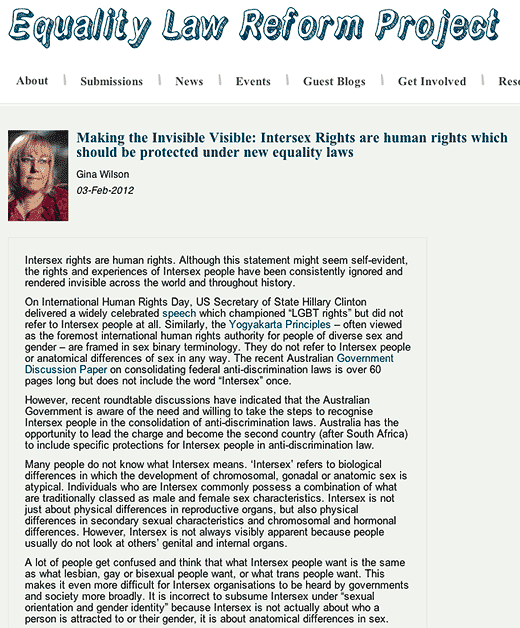Making the invisible visible – intersex rights are human rights and intersex people must no longer be ignored
OII Australia president Gina Wilson has written a guest blog item for the Human Rights Law Centre’s Equality Law Reform Project. The article is titled Making the Invisible Visible: Intersex Rights are human rights which should be protected under new equality laws.”

Equality Law Reform Project: Making the Invisible Visible: Intersex Rights are human rights which should be protected under new equality laws - click to read this article.
Intersex rights are human rights. Although this statement might seem self-evident, the rights and experiences of Intersex people have been consistently ignored and rendered invisible across the world and throughout history.
On International Human Rights Day, US Secretary of State Hillary Clinton delivered a widely celebrated speech which championed “LGBT rights” but did not refer to Intersex people at all. Similarly, the Yogyakarta Principles – often viewed as the foremost international human rights authority for people of diverse sex and gender – are framed in sex binary terminology. They do not refer to Intersex people or anatomical differences of sex in any way. The recent Australian Government Discussion Paper on consolidating federal anti-discrimination laws is over 60 pages long but does not include the word “Intersex” once.
However, recent roundtable discussions have indicated that the Australian Government is aware of the need and willing to take the steps to recognise Intersex people in the consolidation of anti-discrimination laws. Australia has the opportunity to lead the charge and become the second country (after South Africa) to include specific protections for Intersex people in anti-discrimination law.
